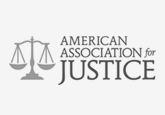Anti-Money Laundering Laws in the United States
The United States has established a robust legal framework to combat money laundering, a practice that involves disguising the origins of illegally obtained money to make it appear legitimate. The principal aim of these laws is to prevent criminal organizations from benefiting from their illicit activities and to maintain the integrity of the financial system. This document provides an overview of the key legislative measures and regulatory bodies involved in the fight against money laundering in the United States.
1. The Bank Secrecy Act (BSA)
Enacted in 1970, the Bank Secrecy Act (BSA) is the cornerstone of the United States’ anti-money laundering (AML) efforts. The BSA requires financial institutions to maintain records and file reports that are useful in detecting and preventing money laundering. Key provisions include the requirement for financial institutions to report transactions exceeding $10,000 and to file suspicious activity reports (SARs) when they detect potentially illicit activity. The Financial Crimes Enforcement Network (FinCEN), a bureau of the U.S. Department of the Treasury, is responsible for enforcing the BSA.
2. The Money Laundering Control Act (MLCA)
The Money Laundering Control Act of 1986 was the first legislation to criminalize money laundering in the United States. Under the MLCA, it is illegal to engage in financial transactions with proceeds derived from certain criminal activities, such as drug trafficking and fraud, with the intent to promote further illegal activities or to conceal the nature of the proceeds. The MLCA also imposes severe penalties on individuals and entities found guilty of money laundering.
3. The USA PATRIOT Act
In response to the terrorist attacks on September 11, 2001, the USA PATRIOT Act was enacted to enhance national security and strengthen AML measures. Title III of the Act, also known as the International Money Laundering Abatement and Anti-Terrorist Financing Act of 2001, introduced several significant changes. These include expanded due diligence requirements for financial institutions, the establishment of new compliance programs, and increased information sharing between financial institutions and government agencies. The Act also broadened the scope of SARs to include transactions that may be related to terrorism.
4. The Anti-Money Laundering Act of 2020
The Anti-Money Laundering Act of 2020 represents the most recent and comprehensive update to the United States’ AML regime. This Act enhances existing measures and introduces new provisions to address emerging threats. Notable aspects include the establishment of a national beneficial ownership registry to improve transparency, increased penalties for violations, and expanded whistleblower protections. The Act also mandates the modernization of AML technology and encourages greater international cooperation in combating money laundering.
5. Regulatory Bodies and Enforcement
Several federal agencies play critical roles in enforcing AML laws and regulations. In addition to FinCEN, the Office of the Comptroller of the Currency (OCC), the Federal Reserve, and the Securities and Exchange Commission (SEC) oversee compliance within their respective jurisdictions. The Department of Justice (DOJ) prosecutes money laundering cases, often in collaboration with other federal and state law enforcement agencies.
In conclusion, the United States has developed a comprehensive and dynamic legal framework to combat money laundering. Through a combination of stringent regulations, rigorous enforcement, and continuous adaptation to emerging threats, the country strives to protect the financial system from exploitation by criminal organizations. Financial institutions, regulatory bodies, and law enforcement agencies must work collaboratively to ensure the effectiveness of these measures and to uphold the rule of law.





